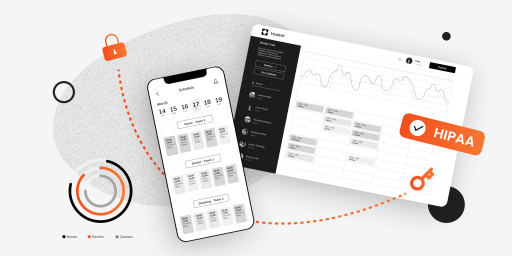Our recent webinar on accessibility brought together design and QA experts to explore one of the most critical — and often overlooked — aspects of digital product development. With the European Accessibility Act compliance deadline around the corner and WCAG continuing to shape product standards worldwide, let’s go over the most important discussion points.
Accessibility Isn’t Just a Feature — It’s a Mindset
Igor Kovalenko, TestFort’s QA Lead, opened with a thought-provoking statement: teams often devote time to performance and UX, but forget accessibility entirely. That oversight can seriously impact users who rely on screen readers, keyboard navigation, or alternative input methods.
Issues like missing alt text, poor heading structure, and low color contrast may seem small, but for users with disabilities, they’re blockers. The solution is to start early and to treat accessibility as a design-stage decision, not an afterthought in QA.
The Hardest Problems to Fix Are the Ones We Ignore at the Start
Our guest speaker, Slava Shestopalov, Design Lead at Wolters Kluwer, emphasized the cost of adding accessibility to an already finished product. When the HTML structure, semantic tags, or page hierarchy are wrong, fixing them later is often complex and expensive. That’s why embedding accessibility into the design system itself, not just individual screens, is crucial.
And while automated tools are helpful for identifying obvious issues, both speakers agreed: you can’t automate context. That’s where manual testing, human judgment, and real user feedback come in.
Accessibility Still Isn’t Seen as a Priority, and That Needs to Change
One of the biggest challenges in accessibility is that it’s still not widely seen as a business driver. Despite multiple studies demonstrating the economic value of serving users with disabilities — or even more broadly, those relying on assistive technologies — accessibility is often overlooked in the early stages of product development. When launching a new digital product, founders and teams are typically focused on immediate priorities like monetization, sales strategy, and core functionality. In that crowded decision-making space, accessibility rarely takes the top spot. At best, it’s added later as a fix, not embedded from the start as a feature. Raising awareness about its long-term value, both ethical and commercial, is crucial to changing that mindset.
Collaboration Is the Key to Real Accessibility
The standout theme of the entire discussion was collaboration. Yes, it’s mostly about the collaboration between design, development, and QA, but also with users themselves. As Bruce Mason, TestFort’s Delivery Director, noted: users with disabilities are the real subject matter experts. Involving them early means fewer surprises, better insights, and a product that actually works for everyone.
Why Automation Alone Isn’t Enough for Accessibility Testing
While automated accessibility tools play an important role in identifying potential issues, they currently have clear limitations. These tools are excellent for getting started — they draw attention to areas that may need improvement and help kick off the accessibility conversation. However, they often lack the intelligence to assess meaning, interpret context, or evaluate situational accessibility. In some cases, a strict rule may be broken, yet the user experience remains unaffected. Plus, certain problems may go unnoticed simply because they require a human perspective to evaluate. Accessibility standards like WCAG and the EAA provide principles and guardrails, but they rarely prescribe specific implementation methods. This flexibility means human judgment is essential. Automated tools can point the way, but only a trained professional can assess whether a digital experience is truly accessible in context.
How Will Non-Compliance with EAA Be Detected?
A common concern for businesses is how non-compliance with the European Accessibility Act will be monitored and enforced. While exact mechanisms may vary across EU member states, a key method will likely mirror what we’ve seen with other legislation, such as the UK’s Disability Discrimination Act. As Bruce noted during the webinar, many accessibility issues are identified and reported directly by users. This means that the more visible and widely used a digital product is, the more likely it is to draw attention and complaints if it fails to meet accessibility standards. In that sense, popularity can increase the risk. Businesses must be proactive: ensuring compliance early not only reduces legal exposure but also builds trust with a broader audience.
Catch Up on Accessibility With Our Webinar
Missed our live discussion or simply want to refresh the most important points? Here is a webinar recording you can watch, share, and talk about with your colleagues.
Jump to section
Hand over your project to the pros.
Let’s talk about how we can give your project the push it needs to succeed!



